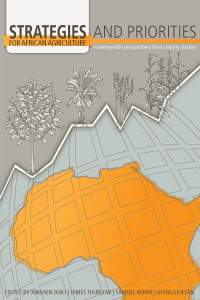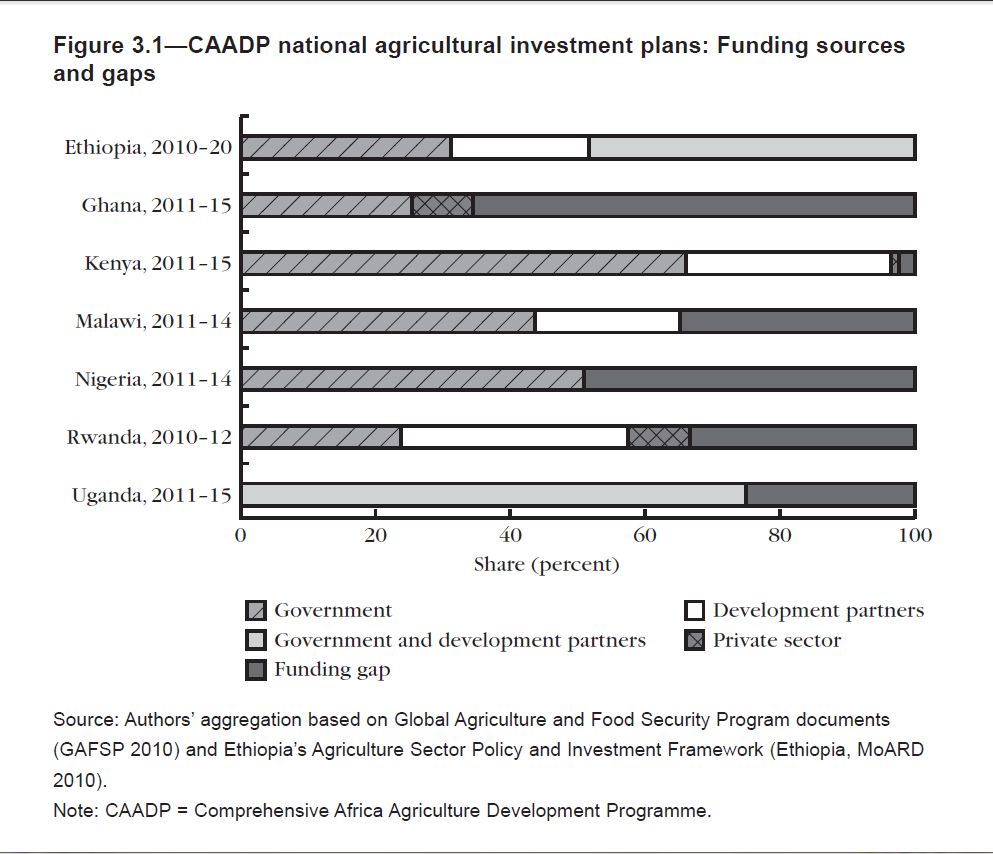 When the Comprehensive Africa Agriculture Development Programme (CAADP) was established by the African Union assembly in 2003, African countries had a clear goal in mind: to eliminate hunger, reduce poverty and increase food security through agricultural investment and growth. To achieve this goal, African leaders committed to allocate a minimum of 10% of the national budgets to the agriculture sector and to raise agricultural growth to at least 6% per year.
When the Comprehensive Africa Agriculture Development Programme (CAADP) was established by the African Union assembly in 2003, African countries had a clear goal in mind: to eliminate hunger, reduce poverty and increase food security through agricultural investment and growth. To achieve this goal, African leaders committed to allocate a minimum of 10% of the national budgets to the agriculture sector and to raise agricultural growth to at least 6% per year.
Nine years have passed, a total of 30 African governments have signed the CAADP compact and 23 countries have completed their national agricultural investment plans. The budgetary allocation to agriculture, however, still remains far below the CAADP target of 10 percent in most of the countries. A new book, Strategies and Priorities for African Agriculture, Economywide Perspectives from Country Studies shows that the funding gap exists in several post-compact countries and their governments rely heavily on external sources of funding – makes it both crucial and urgent to prioritize agriculture and rural development in the design of national development strategies.
According to the book, which includes case studies of ten African countries, a lack of government financial support to agriculture has been associated with a slowdown in economic transformation; on the other hand, increasing agricultural spending could help the nations achieve their economic development and poverty reduction targets. For instance, the case study on Kenya finds that an additional 1.5 million people would be lifted out of poverty by 2015 if the government of Kenya meets the 10 percent investment target. The other countries show the same picture as well.
 From the book Strategies and Priorities for African Agriculture, Economywide Perspectives from Country Studies
From the book Strategies and Priorities for African Agriculture, Economywide Perspectives from Country Studies
Not only the level of agricultural expenditure needs to improve, the inefficiency of public spending is also a challenge that African countries need to tackle. Take Ghana for example: if its government is able to mobilize resources in favor of more productive sectors, subsectors, or activities such as agricultural or rural roads development, the resources required to achieve its development objective could be slashed by more than 50 percent.
As a collection of research results from 20 IFPRI colleagues and collaborators, including the ReSAKSS-AW coordinator Samuel Benin, the book provides rigorous evidences to evaluating agricultural development strategies in ten African countries - Ethiopia, Ghana, Kenya, Malawi, Mozambique, Nigeria, Rwanda, Tanzania, Uganda and Zambia - that represent more than half of the population in low-income areas and capture the diversity of agroecological conditions, agricultural productivity and rural poverty.
More information about the book is available on IFPRI website.
Learn more about the CAADP implementation in the ten countries:

